By The Small Arms Review Editorial Staff
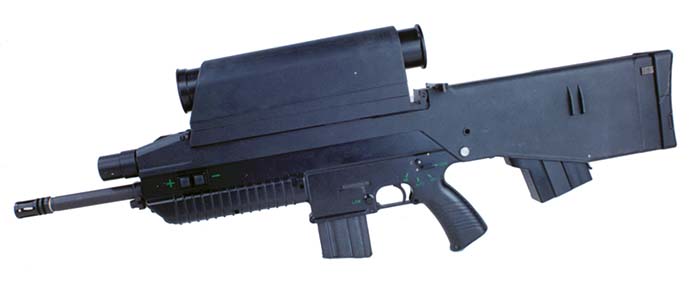
JSSAP, the Joint Service Small Arms Program, has helped the process of innovation in small arms technology in the past- notably the M16A2 improvements. They work on many projects, and one project that is on the current menu is the OICW (Objective Individual Combat Weapon). Both contractor groups that are bidding on the project have been showing off mock-ups at military shows for the last couple of years. At the Modern Day Marine Expo (Quantico, VA) in September 1997, Alliant Tech and FN unveiled their real entrant for the first time. This generated quite a “Buzz” through the industry. SAR thought that the readers would like to see a comparison of the two contenders- most of the details are secret, but we did manage to get exterior photos of each unit.
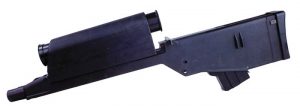
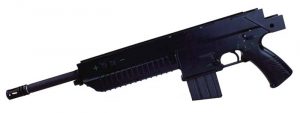
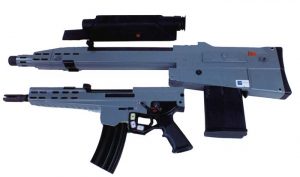
The OICW concept is to expand the capability of the individual soldier- it is the logical outgrowth of the M-16 / M-203 system. Since the beginning of the use of grenadiers, the problem of what to do for a weapon after you have thrown your grenade has been evident. During the Vietnam war, numerous after action reports included stories of highly qualified and courageous M79 grenadiers finding themselves in relatively close quarter battles, having only a .45 pistol for fighting with. The advent of the M-16 / M-203 combination gave each grenadier the additional position of rifleman (This was a very comforting change in the eyes of most grenadiers).
With the advent of modern technology, and “Smart” munitions, changes are again inevitable. The new OICW concept is for a 20mm HE Bursting munition to be part of the rifleman’s inventory. The trajectory is much more direct than the 40mm low pressure system. The “Over-under” concept, pioneered with the M-203 system, has now advanced to the following scenario:
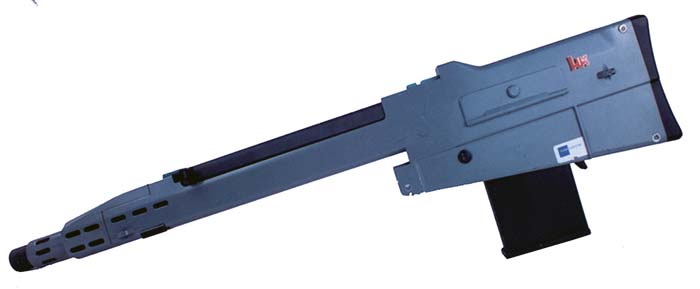
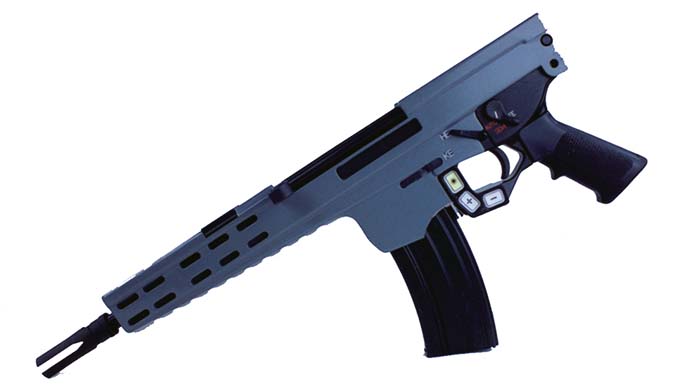
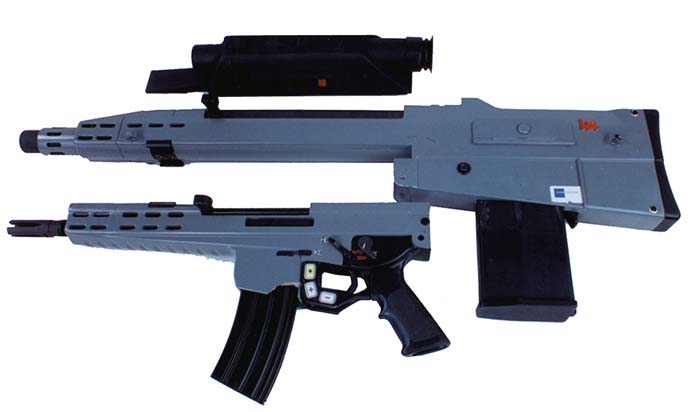
The Optical system includes a special laser range finder that is exceedingly accurate. Once the target has been lazed, the operator can add or subtract distance by single meters. If his target is a soldier hiding behind a rock wall at 850 meters, he lazes, adds 2 meters to the fuzing, and takes aim directly over the rock wall and fires on HE setting. The projectile will explode at 852 meters, directly over, or slightly to the rear of the targeted soldiers. He has a 5.56 mm weapon under the 20mm, which can be used as a regular rifle or a machine gun. The upper and lower sections are separable, but only the AAI / HK offering is planned to be used as modular. If the sophisticated sighting system is knocked out of service, it can be removed, and there are iron sights that can be utilized. The munition is now point detonating.
This writer had some concerns about the effectiveness of the bursting munition being a 20mm. Could the size be a negative? After numerous discussions with both design teams, any hesitation has been negated. The brissance of the explosive used, the quantity used, and the pre-fragmented material used, indicate that almost all soft targets will be vulnerable, and PASGT body armor will not protect against the shrapnel- in a similar radius to the presently used 40mm M203 system. This is very encouraging. Munitions are planned for utilizing a timer that keeps expended cartridges from being left around on the battlefield- reducing risk to civilians as well as friendly troops
Both offerings seem to be extremely well thought out, and ergonomically designed (comfortable to the user). Both teams are in relatively early phases of development, with targets for production around the year 2005- however; live test firing is scheduled to begin early next year.
The SABR team is led by the prime contractor; Alliant Tech Systems, and is composed of HK, Contraves, and Dynamite Nobel.
AAI is the prime contractor on the OICW team, composed of Dyna East, FN, Omega, Hughes, and Olin.
| This article first appeared in Small Arms Review V1N3 (December 1997) |











